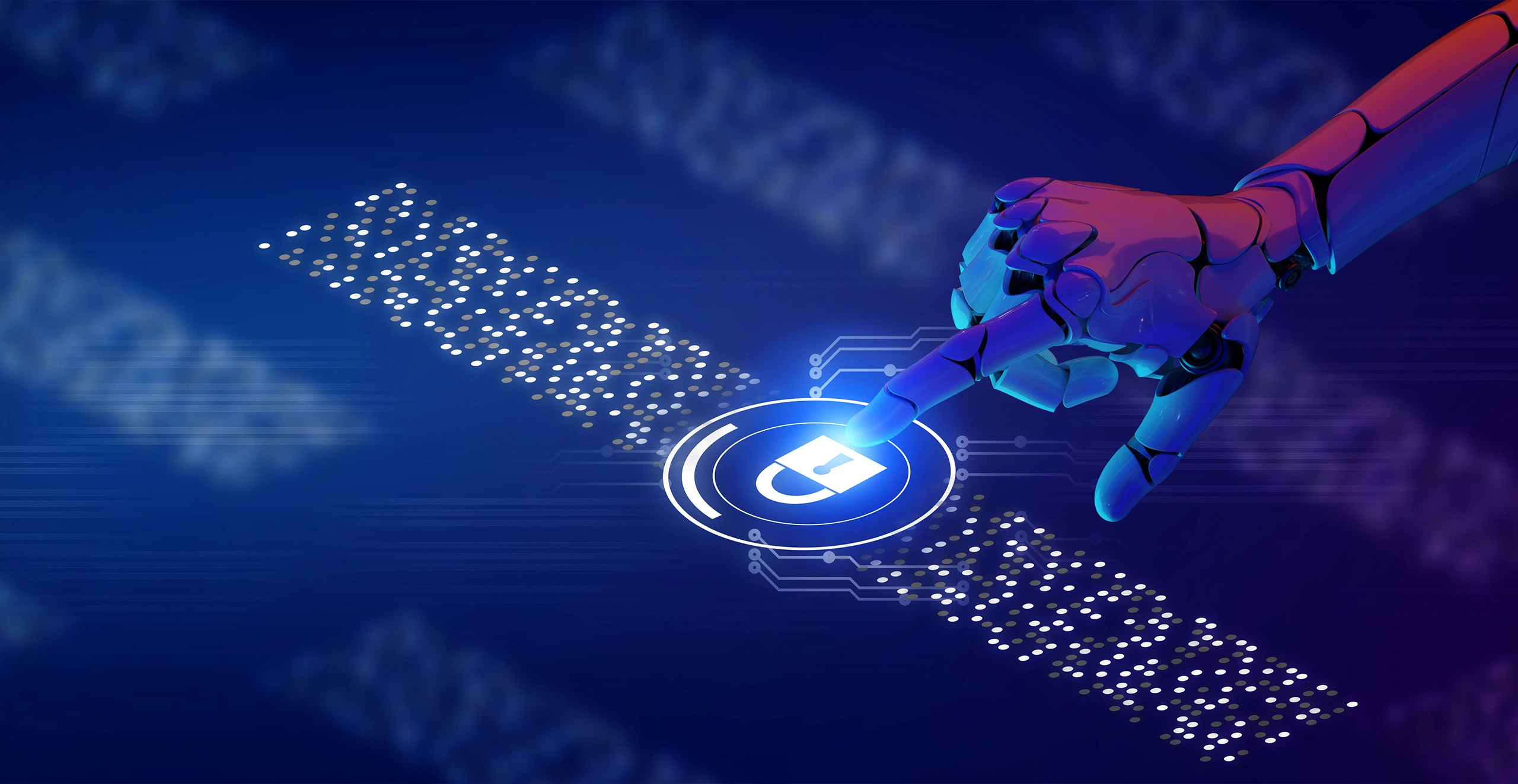The AI-Fueled Threat Landscape
Artificial intelligence is rapidly transforming the cybersecurity threat landscape. Attackers are using automation to identify vulnerabilities, creating more tailored and personalized spear-phishing campaigns using deepfakes, leveraging AI-assisted code generation to write malicious code, and exploiting weaknesses with greater speed and precision than what was possible only a few short years ago. This rise in AI-powered attacks introduces a more complex and dangerous environment for enterprises, but, we believe, also drives opportunities for AI-driven innovation. In response, cybersecurity companies are increasingly embedding AI into their products and services to enhance defenses, improve efficiency and support security teams in managing emerging risks.
With experience spanning more than three decades, the Summit team has seen the cybersecurity sector evolve from the early days of standalone anti-virus tools to the rise of platform vendors with product portfolios that span cloud security, identity and access, and threat detection and response. In our view, AI represents the most significant shift yet. Below, we highlight four areas where we see AI driving meaningful change and opening paths for innovation:
- Identity and Zero Trust: The Next Frontier in Cybersecurity
- AI-Powered Threat Detection and Response: Redefining Speed and Scale
- AI-Driven Automation: Powering Security & IT Operations at Scale
- AI in Application Security: Keeping Pace with Modern Development
Read More: Insights and Resources to Support AI Transformation
1. Identity and Zero Trust: The Next Frontier in Enterprise Security
In our view, AI is accelerating the shift to identity-driven security, making Zero Trust the next frontier in enterprise defense. Zero Trust is a mindset that moves away from the assumption that anything inside a network can be trusted, replacing it with least-privilege access and continuous verification of every user, device and application before granting or maintaining access to data and systems.
We are seeing that proliferation of non-human identities — APIs, service accounts, IoT devices and now AI agents — has only compounded the complexity of identity management, reinforcing the need for Zero Trust principles to extend beyond human users. At the same time, as enterprises increasingly feed sensitive information into AI models and applications, data security becomes inseparable from identity, determining who can access what data, when, and under what conditions.
By enabling real-time verification and adaptive access controls, AI is transforming identity from a static safeguard into the operational backbone of modern cybersecurity. We believe this is helping to drive demand across areas such as Privileged Access Management (PAM), Identity Governance and Administration (IGA), Identity Security Posture Management (ISPM) and Identity Detection and Response. We also see a select group of larger growth-stage companies moving to consolidate this stack and meet an acute market need that we believe AI is helping to accelerate. Summit-backed Keeper Security is focused on addressing an important aspect of identity and Zero Trust with its password and access management platform, and our work with the company reinforces our conviction in the broader identity landscape.
As identity-related incidents remain one of the most common sources of breaches,(1) ransomware and data exfiltration, we expect demand for AI-powered identity and Zero Trust solutions to accelerate. We view these capabilities as becoming foundational to modern enterprise security, helping organizations strengthen protection for both human and non-human identities at scale.
2. AI-Powered Threat Detection and Response: Redefining Speed and Scale
With an expanding attack surface that now spans endpoints, cloud workloads, networks, identities and SaaS applications, traditional rules-based approaches can no longer keep pace. AI makes it possible to spot subtle anomalies and respond in real time, laying the groundwork for more predictive and autonomous approaches to defense and, in our view, making threat detection and response one of the clearest beneficiaries of AI adoption.
Summit recognized the potential of AI in threat detection and response over a decade ago, investing in Darktrace in 2015. As one of the first AI-native cybersecurity companies, we believe Darktrace pioneered the use of unsupervised learning to analyze network traffic, detect anomalies and identify threats without relying on static rules. Darktrace’s approach helped redefine threat detection and response and fueled the company to a $5.3 billion enterprise value at the time of its 2024 acquisition.
Today, we are increasingly seeing companies apply AI across the spectrum of threat detection and response, both by enhancing existing tools and by building new AI-native solutions. As adversaries grow faster and more sophisticated, we believe the ability to continuously learn from data and respond dynamically will remain central to effective cybersecurity.
3. AI-Driven Automation: Powering Security & IT Operations at Scale
The same AI-driven automation we see transforming threat detection and response is also reshaping both security and IT operations workflows, turning routine execution into a strategic layer of defense. Enterprises are increasingly adopting AI-driven tools to handle repetitive, high-volume, resource-intensive tasks, particularly within these areas.
In security operations centers (SOCs), high alert volumes and repetitive investigations have long led to analyst fatigue. AI can help address this challenge by accelerating threat detection, automating analysis and context gathering and filtering out false positives. We believe Red Canary provides a compelling example of this transformation. Applying insights from more than a decade of proprietary threat and remediation data, Red Canary’s AI agents help cut investigation times by 90% on average(2) and free human analysts to focus on the most complex risks. We believe this impact on SOC efficiency and resilience helped lead to the company’s acquisition by Zscaler earlier this year, underscoring how integral these capabilities have become to next-generation security platforms.
In IT operations, we are seeing AI-powered automation transforming routine tasks into proactive layers of defense. Patch management, system monitoring and updates may seem mundane, but failure to execute them effectively can open the door to major vulnerabilities. Summit portfolio company NinjaOne has evolved its platform to embed AI in these workflows, most notably with its Patch Intelligence AI, which is designed to flag risky updates before wide deployment. By working to make patching predictive and intelligent, NinjaOne helps improve efficiency and reduce security risk, closing gaps before they can be exploited.
We have seen how AI-driven automation is already delivering measurable results, improving efficiency, reducing burnout and strengthening resilience, making it one of the most immediate and impactful innovations in cybersecurity today. We believe this theme will remain central to SOC and IT operations in the years ahead.
4. AI in Application Security: Keeping Pace with Modern Development
Applications and APIs underpin the digital operations of modern enterprises, but we believe they also represent one of the fastest-growing sources of risk. The rise of AI is amplifying this challenge, accelerating both the pace of software development and the speed at which attackers can discover and exploit weaknesses. We are seeing that traditional models of application security cannot keep pace with the scale and dynamism of modern environments. With new code released daily, hundreds of applications running in parallel, and shifting cloud architectures, we believe vulnerabilities can be exploited long before traditional cybersecurity methods detect them.
AI is helping to change this paradigm. By continuously analyzing application behavior, prioritizing vulnerabilities by potential impact and adapting protections as environments evolve, AI-driven platforms are moving application security from periodic manual testing to more continuous protection. This enables security to be embedded earlier in development while also extending into production, which we believe creates a more resilient layer of defense. Summit portfolio company Invicti illustrates this opportunity, applying AI to accelerate detection, improve accuracy and help DevOps and security teams protect applications without slowing innovation.
Looking Ahead: Innovation Opportunities for Growth Leaders
AI is not only changing how attackers operate but also how defenders must respond, and we believe the opportunities are broad. We see identity and Zero Trust, threat detection and response, automation of security and IT operations, and application security as key areas where AI is reshaping the competitive landscape and opening paths for the next generation of market leaders.
At the same time, we believe technology alone will not be enough. As AI continues to change the pace and nature of cyber threats,(3) human readiness will remain a critical counterpart to automation and analytics. Summit’s investment in Immersive reflects our belief that resilient enterprises will need to pair advanced technology with continuous human capability, helping to ensure that people remain central to defense, even as AI helps redefine the tools they use.
At Summit, our vantage point, built over three decades and 20+ cybersecurity investments, reinforces our conviction that AI is the most fundamental shift yet in the sector. We believe the leaders of tomorrow will be those who turn today’s AI-driven opportunities into lasting advantages — combining the power of automation and analytics with human insight and readiness — to set new standards for resilience, efficiency and trust across the digital enterprise. We are committed and excited to support the innovators helping drive this transformation.
Growth Timeline
Don't delete this element! Use it to style the player! :)
.png)


Related Experience
Summit has backed more than 20 cybersecurity companies over the last three decades, including:
Related Content
(1) Source: Security Magazine, 90% of Organizations Experienced an Identity Incident this Past Year, May 29, 2024
(2) Source: Red Canary, Red Canary Expands AI Innovations to Cut Alert Overload, Accelerate Incident Response, and Simplify SOC Workflows, June 10, 2025.
(3) Source: McKinsey, AI is the greatest threat—and defense—in cybersecurity today. Here’s why, May 15, 2025
Information obtained from sources believed to be reliable and current, but accuracy cannot be guaranteed.
The content herein reflects the views and opinions of Summit Partners and is intended for executives and operators considering partnering with Summit Partners.
The information herein has not been independently verified by Summit Partners or an independent party. Such content and information should not be construed or relied upon as an indication of future performance or other future outcomes. For a complete list of Summit Partners portfolio companies, please click here. In recent years, technological advances have fueled the rapid growth of artificial intelligence (“AI”), and accordingly, the use of AI is becoming increasingly prevalent in a number of sectors. Due to the rapid pace of AI innovation, the broadening scope of potential applications, and any current and forthcoming AI-related regulations, the depth and breadth of AI’s impact - including potential opportunities – remains unclear at this time.
Inferences herein to “expertise” or any party being an “expert” or other particular skillsets are based solely on the belief of Summit Partners and are provided only to indicate proficiency as compared to an average person. Such inferences should not be construed or relied upon as an indication of future outcomes.
Information herein is as of October 23, 2025.
Get the Latest from Summit Partners
Subscribe to our newsletter to stay up to date on our partners, portfolio, and more.

























